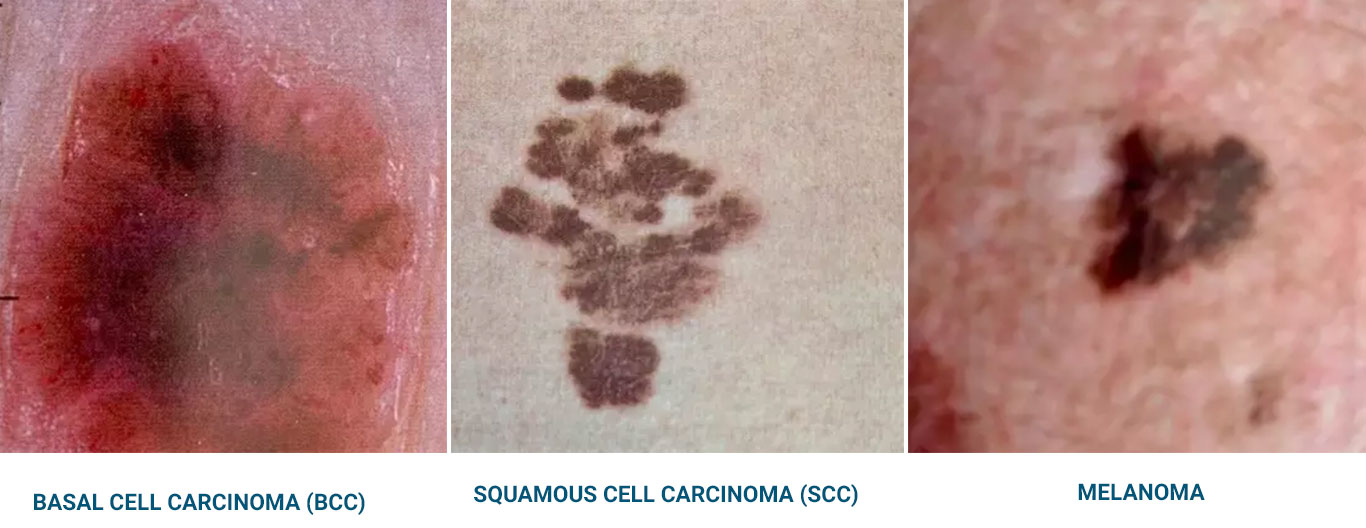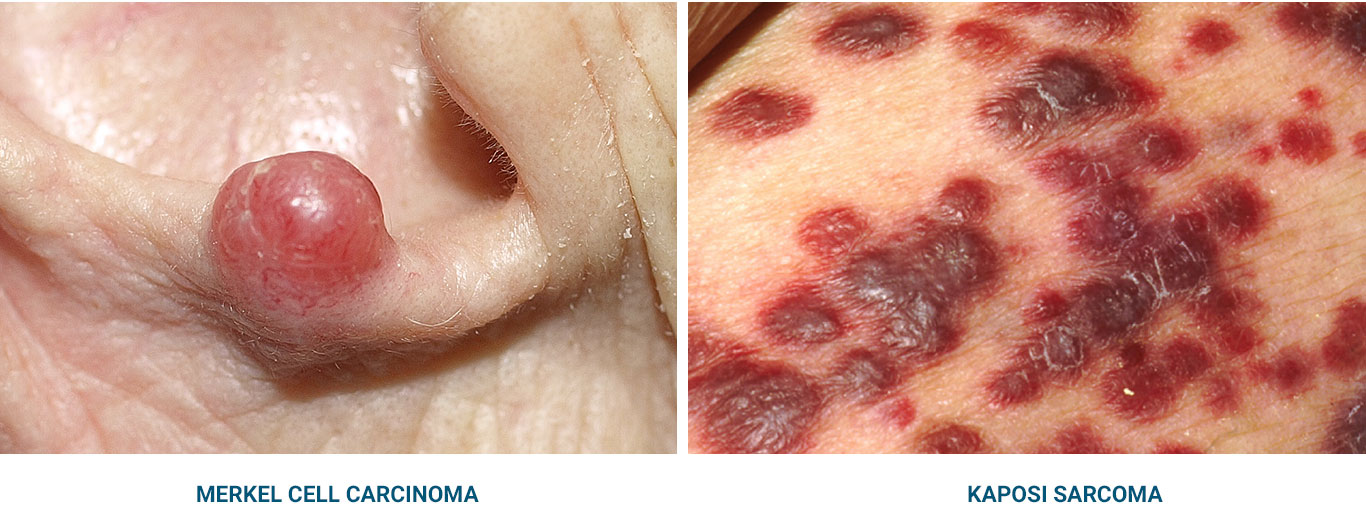
Skin cancer, the abnormal growth of skin cells, is one of the most common forms of cancer globally. Understanding the different types of skin cancers is crucial for early detection and effective treatment. This article provides an overview of the main types of skin cancers, their characteristics, and their impact.


Basal Cell Carcinoma (BCC)
- Description: Basal cell carcinoma is the most common type of skin cancer. It arises from the basal cells, which are found in the deepest layer of the epidermis.
- Appearance: BCC often looks like a flesh-colored, pearl-like bump or a pinkish patch of skin.
- Common Locations: Typically occurs in areas frequently exposed to the sun, such as the head, neck, and arms.
- Treatment: Often treated effectively with surgical removal. Early detection generally leads to excellent outcomes.
Squamous Cell Carcinoma (SCC)
- Description: Squamous cell carcinoma originates from squamous cells, which are found in the middle and outer layers of the skin.
- Appearance: SCC can appear as a red firm bump, a scaly patch, or a sore that heals and then re-opens.
- Common Locations: Commonly found on areas exposed to UV radiation, like the ears, face, and hands.
- Treatment: Treatment typically involves surgical removal, though radiation therapy may be used in some cases. Early treatment is important to prevent spread to other areas.
Melanoma
- Description: Melanoma is the most serious type of skin cancer and can develop in the melanocytes, the cells that produce melanin.
- Appearance: Melanomas can appear as new moles or changes in existing moles. The ABCDE rule (Asymmetry, Border irregularity, Color variation, Diameter over 6mm, Evolving size or shape) is a helpful guide.
- Common Locations: Can occur anywhere on the body, not limited to sun-exposed areas.
- Treatment: Treatment options include surgical removal, immunotherapy, targeted therapy, chemotherapy, and radiation therapy. Early detection greatly improves treatment success.
Merkel Cell Carcinoma
- Description: A rare but aggressive skin cancer that develops in Merkel cells located at the base of the epidermis.
- Appearance: Typically appears as a painless, firm, shiny nodule that may be red, pink, or blue.
- Common Locations: Often develops on sun-exposed areas, such as the head, neck, and arms.
- Treatment: Treatment usually involves surgery, often followed by radiation therapy. Early detection is critical.
Kaposi Sarcoma
- Description: A rare type of skin cancer that develops in the blood vessels and affects the skin and other organs. It is often associated with weakened immune systems.
- Appearance: Appears as red or purple patches on the skin or mucous membranes.
- Common Locations: Can appear anywhere on the body.
- Treatment: Treatment varies based on the extent of the disease and can include surgery, radiation therapy, and chemotherapy.
Conclusion
Understanding the types of skin cancers and their characteristics is vital for early detection. Regular skin checks, both self-examinations and professional screenings, are essential. If you notice any changes or new growths on your skin, consult a healthcare professional promptly. Early diagnosis and treatment can significantly improve outcomes for all types of skin cancers.
Embark on whole year with a commitment to your health. At The Lakes Family Medical Centre, we’re here to guide you every step of the way. Together, let’s make this year your healthiest yet! Head to Hotdoc and book an appointment,, Start with personalised healthcare!
Learn more about The Lakes Family Medical Centre :




